Back in 2001, the Cartoon Network gave birth to one of the greatest heroes of our time, that of the stoic champion
Samurai Jack. Created by Genndy Tartakovsky, this animated series told the adventures of a nameless Samurai warrior who was sent forward in time to a dystopian future, one ruled by the tyrannical shape-shifting demon named Aku.
Samurai Jack was inspired by Tartakovsky's enjoyment of the Kung Fu televised drama starring David Carradine — the one Bruce Lee proposed but was then given to a white guy — but this animated series wasn’t at all limited to the martial arts drama as it bounced around genres from steampunk to high fantasy. Today, we will be looking at three particular episodes that dove headfirst into the realm of horror.
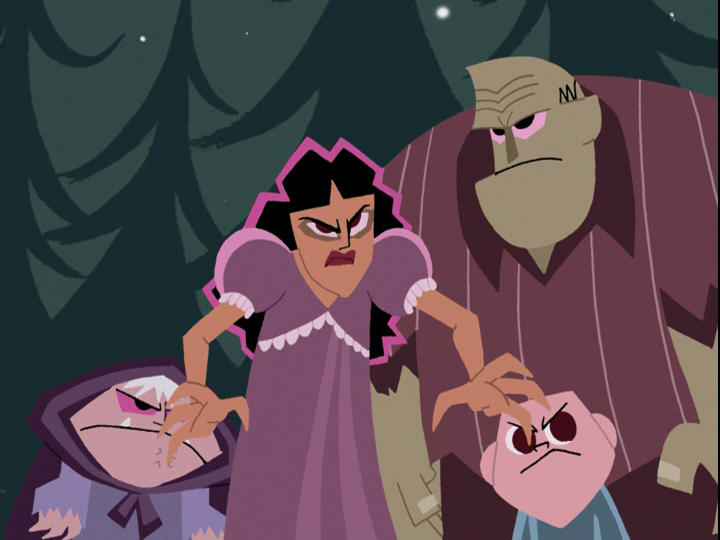
Episode XV
In this episode, we get three short stories, the first one dealing with Jack journeying to the land rumoured to have a giant wish-giving worm — that he hopes will be able to send him back to the past — and the third story has Jack trying to rescue a wish-giving fairy from the captivity of a greedy gargoyle, but it’s the middle tale that is a true journey into horror. While trying to cook dinner over a campfire, Jack is interrupted by a family of four who claim to be very hungry, and Jack being the decent sort that he is, invites them to share his fire. Unfortunately, this little group is more interested in eating his magic sword than any of the victuals he has to offer. When the battle results in the “mother” having her face sliced off, it’s revealed that this “family” were actually a group of robots, mechanical creatures with an unstoppable need to eat metal.
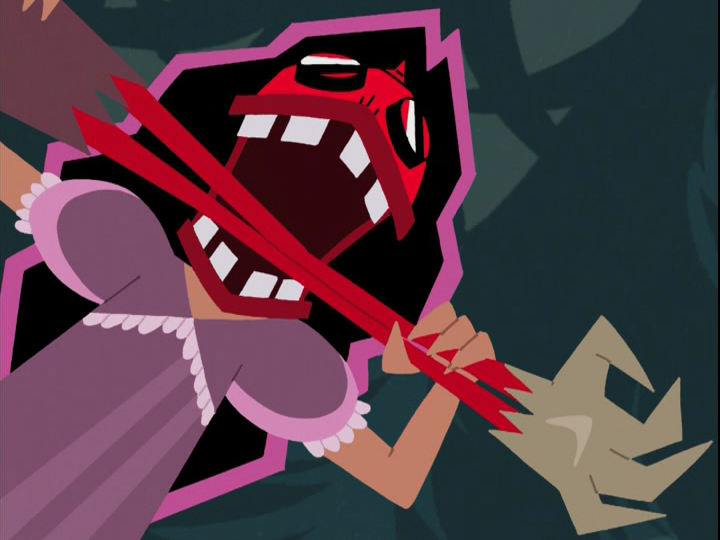
Tell me that's not just horrifying.
The woman’s exposed face causes her family to turn on her with a cannibalistic fury and soon the group is fighting amongst themselves, forgetting about good ole Jack and his sword while they proceed to eat each other. It was the use of robots as antagonists that allowed Genndy Tartakovsky to revel in the violence of those classic
Golden Harvest Kung Fu movies, with black oil replacing blood — parents can’t complain about a robot being beheaded — but this particular episode ratcheted things up to eleven with its nightmare fuel of robot gore.
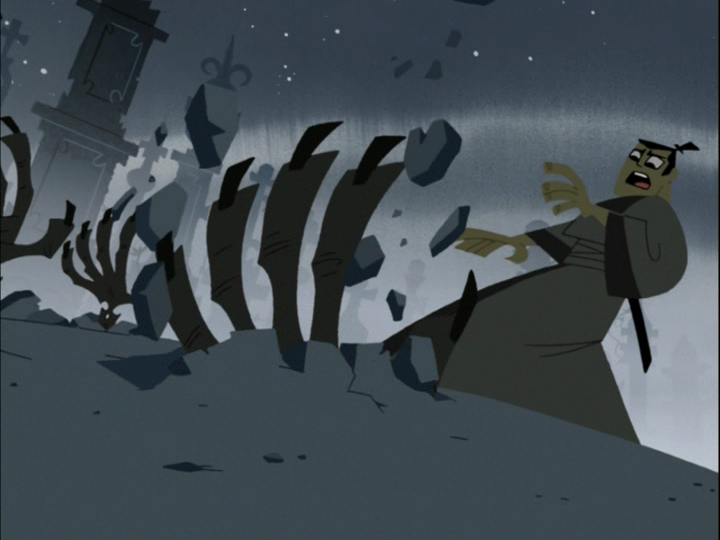
Episode XXX
The current state of horror in media today has what one could call an over-abundance of zombie content, with the undead crowding both big and small screens, but back in 2002, Genndy Tartakovsky took his animated series into such fertile ground (you know, for the kids). In this episode, the machinations of the demon Aku sends Jack down a dark path, one that leads our time-lost Samurai into a fog-shrouded graveyard, and before you can say
George Romero, Aku uses his dark magic to put Jack up to his armpits in the army of the dead.
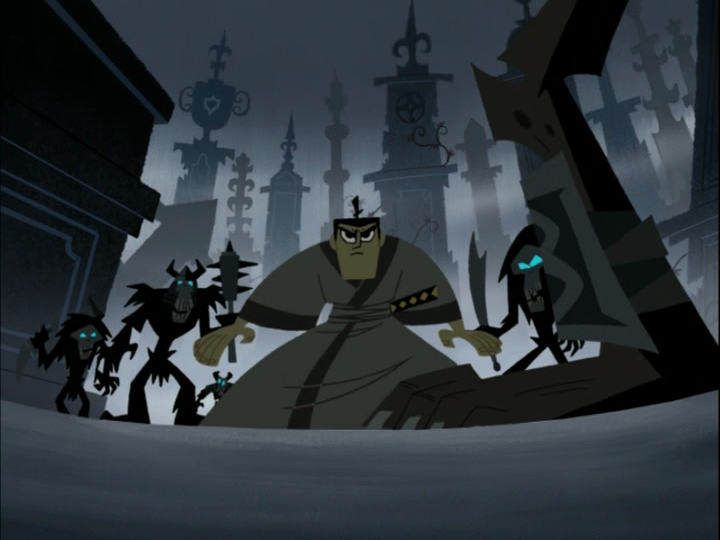
When there is no room in Hell, the dead will walk the Earth.
The interesting thing here is that these are literal undead creatures, not robot versions as we’d come to expect with this show, so the horror level is fairly high here as Jack finds himself quickly outnumbered by sword-wielding corpses. Then, as if being surrounded by the dead wasn’t enough of a threat, Jack has to face what appears to be an undead witch who goes after Jack like she’d just escaped from a Sam Raimi movie.
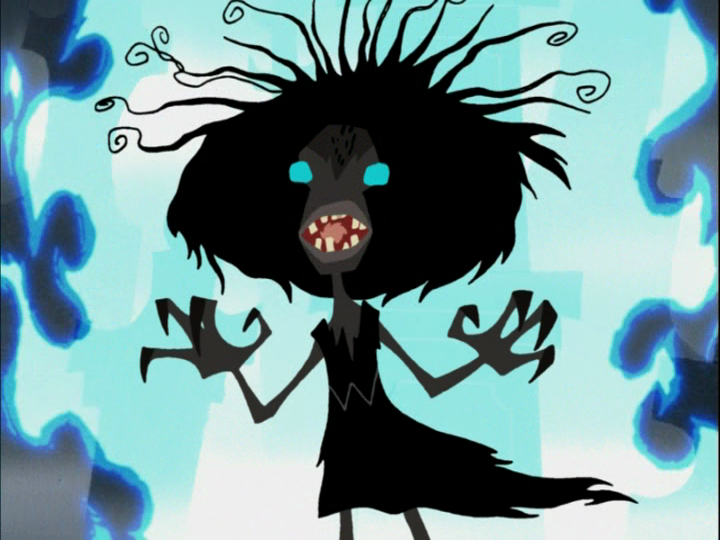
“I’ll swallow your soul!”
This is a truly thrilling episode and Genndy Tartakovsky’s only concession to it being a kid’s television show is that when the undead soldiers die, they explode in a cloud of dust instead of in heaps of gore. The art direction for this episode is especially gorgeous and the horrific denizens clearly owe a lot to the works of
Hellboy creator Mike Mignola — why Genndy Tartakovsky was never given the reigns to a
Hellboy cartoon is beyond me — and it all goes towards making this episode an amazing entry in the horror genre.
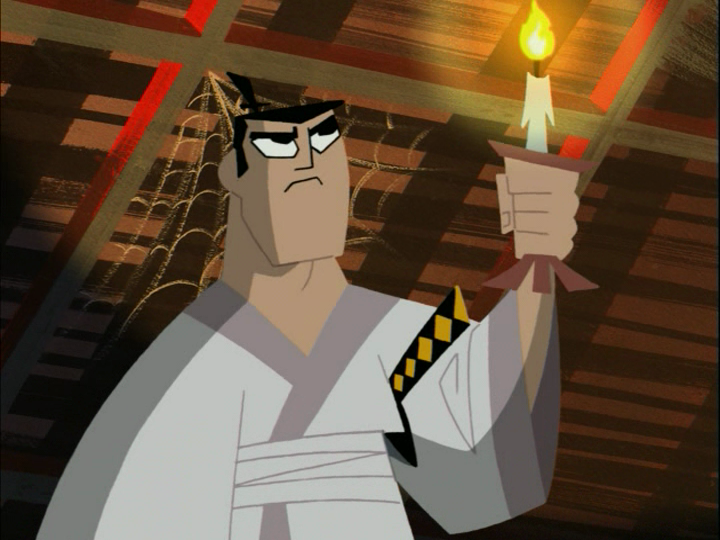
Episode XXXV
The very nature of
Samurai Jack’s lore is, of course, steeped in Japanese history and culture, so it should be of no surprise that one of the best episodes dealt with Japanese folklore itself and its tendency towards beautifully disturbing ghost stories — or Yūrei as they call them. In this episode, we find Jack being led into one of the most terror-filled adventures of his career, a story that seems ripped right from those classic Japanese tales of terror. Samurai Jack follows a little girl to return a doll that she lost in the woods, but when she leads him into a haunted house, one filled with memories of the previous inhabitants, things take a rather dark turn.
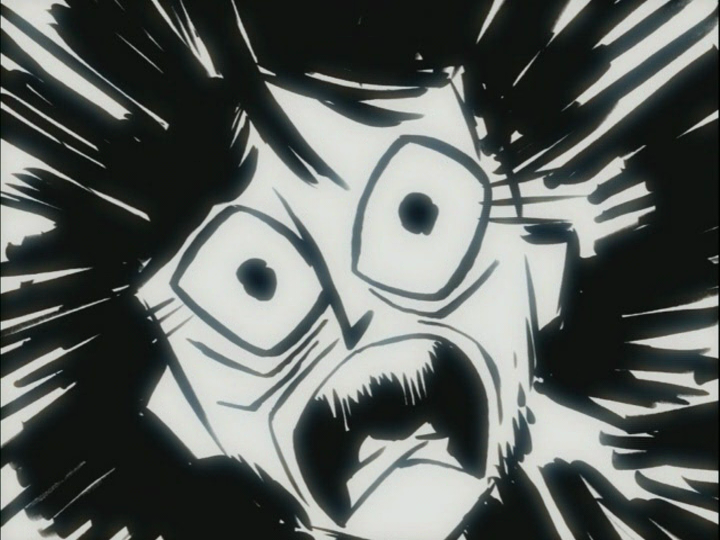
Visions of terror.
Jack begins to explore the house, surprised by its long-abandoned appearance as it is not the home one would expect a little girl to be currently living within, but upon finding the girl, he soon discovers that the doors and windows to the house have mysteriously vanished and that the two of them are now trapped inside this terror-filled abode. When Jack encounters the girl’s family, who seem completely unaware that their home is a cobwebbed shambles, it becomes clear to our hero that a true mystery is afoot, but facing off against a powerful demon was the last thing Jack had expected.
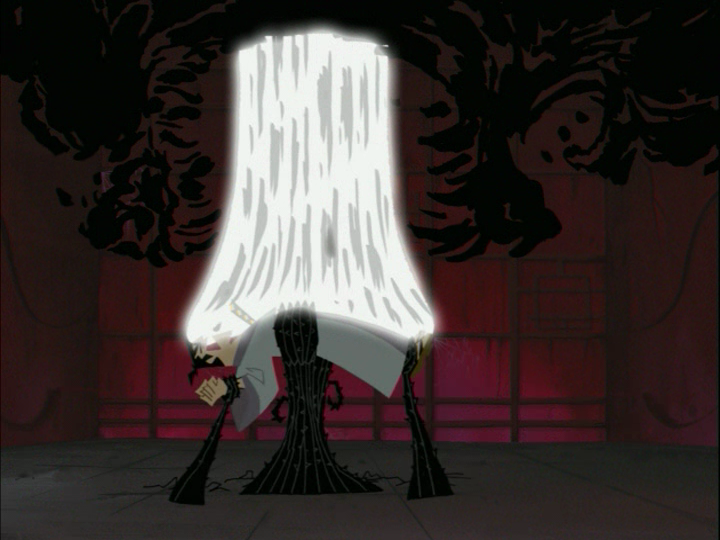
Soul removal at bargain-basement prices.
In what first appeared to be a Japanese “Cabin in the Woods” type scenario, the episode quickly shifts into a surreal battle between our hero and the soul-swallowing demon who desires to add Jack’s soul to his collection of prey, souls that he has trapped in a bizarre limbo-like dimension. Needless to say, keeping Samurai Jack is a lot harder than catching him, and soon our hero is battling this evil creature and freeing the little girl’s family.
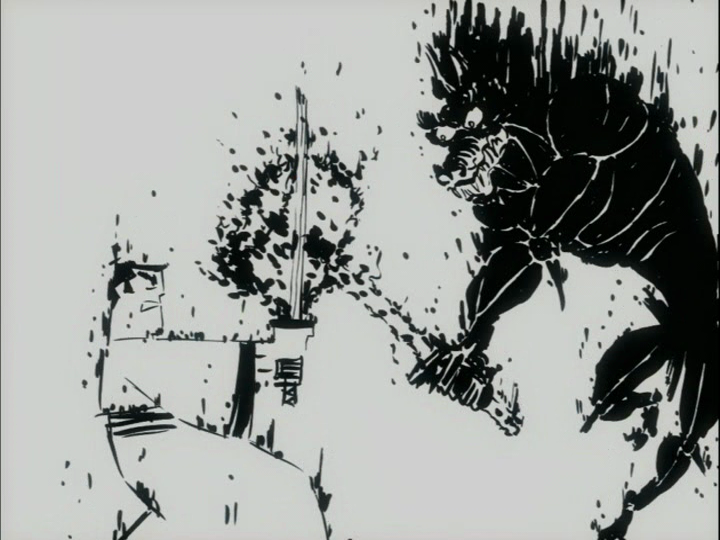
Even without a body, Jack kicks ass.
Genndy Tartakovsky’s
Samurai Jack is easily one of the more beautiful and creatively inspired animated series ever brought to television, with nods to many artists and genres coming from multiple eras and styles, but these three journeys into terror are particular favourites of mine. So, if you want to give your young ones an introductory taste of horror, you could do a lot worse than exposing them to the dark worlds of
Samurai Jack.
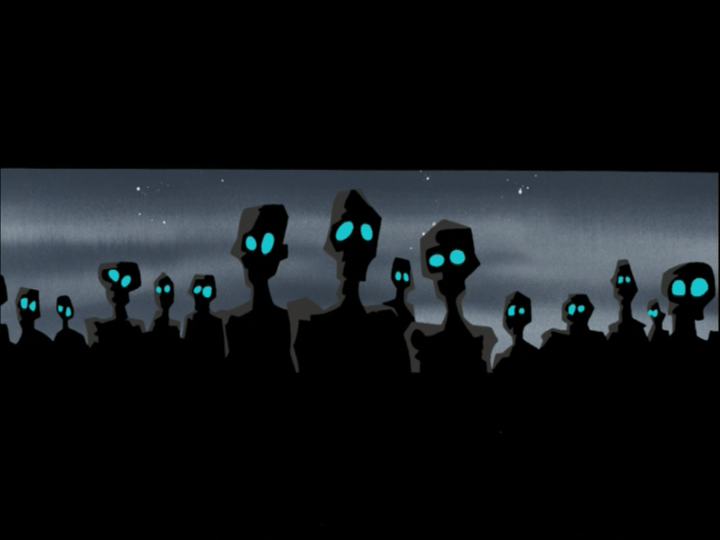
Terror awaits those who enter these dark waters.











No comments:
Post a Comment